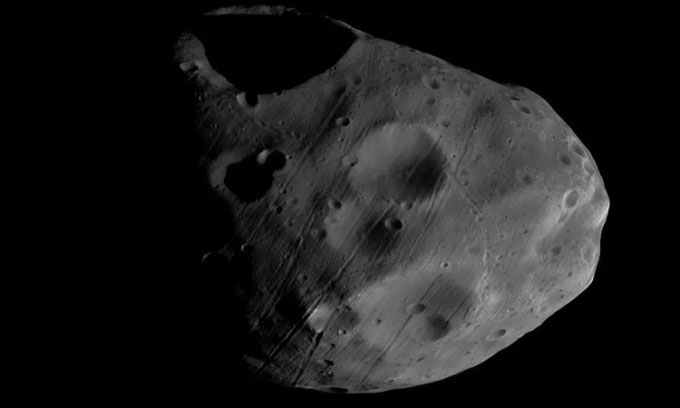The European Mars Express spacecraft has observed the subsurface layer of the Martian moon Phobos in greater detail, revealing an unprecedented structure that could shed light on the celestial body’s origins.

Close-up image of the moon Phobos. (Photo: ESA)
After 19 years orbiting Mars, Mars Express approached Phobos at a distance of 83 km on September 22, 2022, and explored beneath the surface of this moon using upgraded software on the MARSIS (Mars Advanced Radar for Subsurface and Ionosphere Sounding) instrument, as reported by Space on October 31. “We are still in the early stages of analysis, but we have detected signs of an unknown structure beneath the surface of Phobos,” said Andrea Cicchetti, a member of the MARSIS scientific team at the National Institute of Astrophysics in Italy (INAF).
Mars has two moons named Phobos and Deimos, after the Greek gods of “fear” and “panic.” Unlike the larger moons in the Solar System, Phobos and Deimos are very small, measuring only 27 and 15 km in diameter, respectively. They have a composition similar to that of C-type asteroids and an unusual shape, leading to speculation that they may be wandering asteroids captured by Mars’s gravity. However, both Phobos and Deimos have orbits that are above the equator and are extremely circular, indicating that they formed around Mars. If they had been captured, they would have elliptical orbits in different planes.
MARSIS is equipped with a 40-meter-long antenna that transmits low-frequency radio waves to the surface of Phobos. Most of the radio waves are reflected directly back, but some penetrate deeper. There, they encounter transitional layers of various components and structures before reflecting back. The stronger the reflection, the brighter the transmitted radio signal. Radar charts from Phobos indicate the presence of a strange structure beneath the surface of this moon.
MARSIS was designed to probe the internal structure of Mars from an orbit at a distance of over 250 km, but recent software upgrades have allowed it to operate at much closer distances. Approaching Phobos more closely will provide radar charts with higher resolution. The near-term plan is to maneuver MARSIS to fly within 40 km of Phobos during passes in mid-2023 and 2025.
Mars Express is not the only mission focusing on Phobos. In September 2024, the Japan Aerospace Exploration Agency (JAXA) plans to launch the Martian Moon eXploration (MMX) spacecraft. MMX will collect at least 10 grams of surface soil from Phobos and return it to Earth for analysis by scientists.


















































